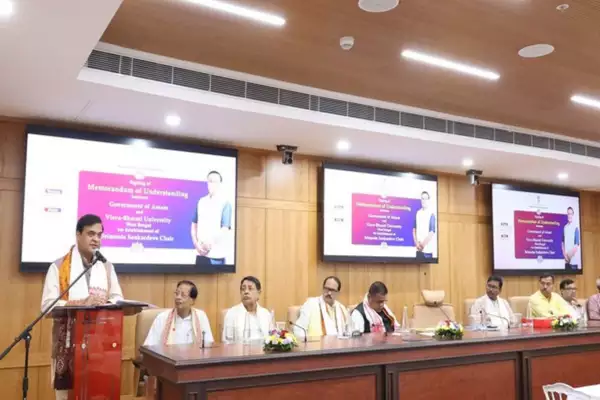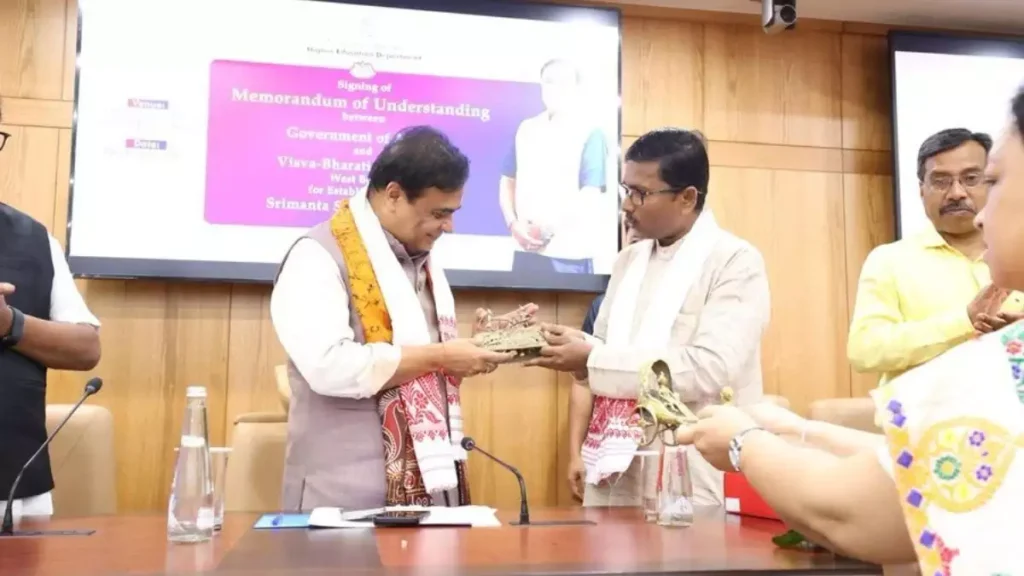Assam government has signed MoUs with Visva Bharati University to establish a Srimanta Sankardeva Chair.
About Srimanta Sankardeva:
- Birthplace: Aali-pukhuri, Nagaon district, Assam.
- Era: 15th–16th century (1449–1568).
- Occupation: Saint-scholar, polymath, poet, playwright, dancer, actor, musician, artist, and social-religious reformer.
Religious and Cultural Contributions:
- Religious Reformation: Propagated a form of Vaisnavism known as Ek-Sarana-Hari-Naam Dharma, emphasizing monotheism and the worship of Lord Krishna as the one eternal and absolute entity.
- Monasteries: Founded unique Vaishnavite monasteries known as Sattras, which serve as socio-religious institutions in Assam.
- Music and Performing Arts: Created new forms of music (Borgeet), theatrical performances (Ankia Naat and Bhaona), and dance forms (Sattriya).
- Literary Contributions: Developed a literary language called Brajavali. Authored several significant works including Bhakti Pradipa, Bhakti Ratnakara, Kirtanna Ghosh, and the trans-created scripture Bhagavat of Sankardev.
Influence on Politics:
- The Ekasarana Dharma or Neo-Vaishnavite movement he initiated had a profound impact on medieval kingdoms such as the Koch and Ahom kingdoms.
- His teachings were later endorsed by the Matak Kingdom, founded by Bharat Singha and consolidated by Sarbananda Singha in the 18th century.
Ref: Source
| UPSC IAS Preparation Resources | |
| Current Affairs Analysis | Topperspedia |
| GS Shots | Simply Explained |
| Daily Flash Cards | Daily Quiz |
Frequently Asked Question:
Who was Srimanta Sankardeva?
Srimanta Sankardeva was a 15th-16th century saint-scholar, poet, and religious reformer from Assam.
What is Ek-Sarana-Hari-Naam Dharma?
Ek-Sarana-Hari-Naam Dharma is a form of Vaisnavism propagated by Srimanta Sankardeva, emphasizing monotheism and the worship of Lord Krishna
What are Borgeets and who created them?
Borgeets are devotional songs composed by Srimanta Sankardeva, forming a crucial part of Assamese Vaishnavite music.


